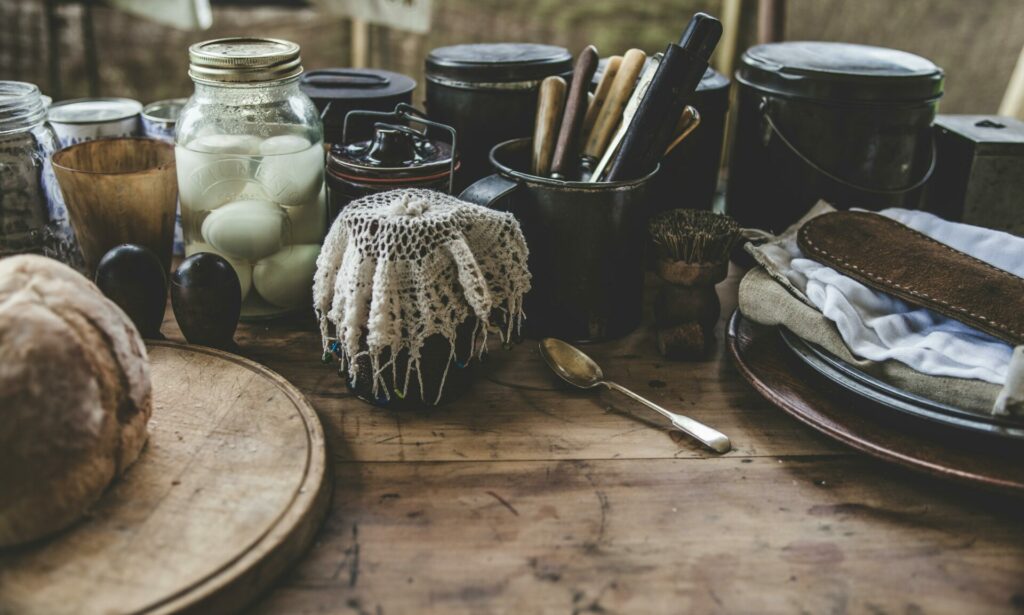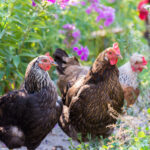Your cart is currently empty!
Homesteading on a Budget: How to Get Started with Minimal Investment
Homesteading is a lifestyle that has grown in popularity in recent years, thanks to its focus on sustainability, self-sufficiency, and a back-to-basics approach to living. Whether you want to grow your own food, raise livestock, or simply live in harmony with nature, homesteading offers numerous benefits. However, many people are discouraged from starting due to the belief that homesteading requires a large investment of money.
The truth is, you don’t need a fortune to begin your homesteading journey. By approaching homesteading strategically, focusing on low-cost resources, and scaling up gradually, you can start living the homesteading dream without breaking the bank. Here’s how to get started with minimal investment!
1. Start Small and Scale Up Gradually
Homesteading is a journey, not a destination. Many new homesteaders make the mistake of thinking they need to go big right from the start, buying large plots of land, raising multiple animals, and starting massive gardens. In reality, the best approach is to start small and scale up over time as your experience and resources grow.
Key Tips:
- Begin with a small garden: Focus on a few easy-to-grow crops like tomatoes, lettuce, and herbs. You don’t need a huge space to grow food, small raised beds or container gardens work great for beginners.
- Raise a few chickens: If you’re interested in raising livestock, chickens are affordable and relatively low-maintenance animals. They can provide fresh eggs and natural pest control for your garden.
- Focus on learning: The first few months (or even years) should be spent gaining knowledge and honing skills. Don’t worry about having everything perfect at the outset.
By starting small, you’ll be able to learn and adapt without feeling overwhelmed by large financial commitments. As you gain confidence and skill, you can gradually expand your homestead.
2. Utilize Low-Cost or Free Resources
One of the easiest ways to save money when homesteading is by making use of free or low-cost resources that are readily available. Many homesteading essentials, from gardening tools to educational materials, can be obtained for little to no cost.
How to Save:
- Educational resources: Use free online resources like blogs, YouTube channels, and social media groups dedicated to homesteading. My Homesteading Course offers a wealth of information and guidance for those looking to start out on a budget.
- Local gardening clubs: Many communities have gardening clubs or environmental groups where you can exchange seeds, tips, or even free tools.
- Farmers’ markets and local co-ops: Networking with local farmers or homesteaders can open up opportunities to trade resources like compost, manure, or even plants. You can also learn from others’ experiences and gain valuable insights into local growing conditions.
If you’re new to homesteading, these free or low cost resources can help reduce the initial financial burden, providing you with valuable information, supplies, and support.
3. Repurpose and Reuse Materials
When you begin homesteading on a budget, repurposing and reusing materials is an excellent way to save money while reducing waste. The homesteading lifestyle aligns with sustainable practices, and repurposing materials fits perfectly with that philosophy.
Examples of Repurposing:
- Pallets: Old wooden pallets can be transformed into everything from garden beds to compost bins, furniture, and even chicken coops. If you look around, you can often find pallets for free at local businesses, Marketplace or on Craigslist.
- Scrap metal and wood: If you have access to discarded metal, wood, or other building materials, you can often repurpose these items into useful tools, structures, or furniture.
- Used containers: Repurpose containers like jars, plastic bottles, and old buckets for planting, composting, or organizing tools.
If you’re creative and resourceful, you can turn almost anything into something useful for your homestead. Look at what you have around you before spending money on new materials. You’d be surprised by how much can be recycled!
4. Grow Your Own Food
One of the main draws of homesteading is the ability to grow your own food. Not only is it more sustainable, but it can also be a major cost-saver. Starting a garden doesn’t have to be expensive; you can use inexpensive or even free seeds to start your food-growing journey.
Tips for Growing on a Budget:
- Start with seeds: Seeds are far less expensive than buying established plants. Many vegetables and herbs can be grown from seed easily, especially if you start them indoors in the early spring.
- Use compost: Creating your own compost from kitchen scraps, lawn clippings, and other organic waste can save money on fertilizers while enriching your soil.
- Companion planting: Some plants naturally help each other grow when planted together. For example, planting basil next to tomatoes can help repel pests. Learn how to maximize your garden space by using natural companion planting techniques.
- Grow perennial plants: Perennials, such as asparagus, rhubarb, and certain herbs, come back year after year, saving you the cost and effort of replanting annually.
Growing your own food is one of the most cost-effective ways to begin homesteading. Not only will it feed you, but it can also provide you with valuable knowledge about sustainable farming practices.
5. Raise Livestock on a Small Scale
While large-scale animal farming requires significant investment, raising small livestock is an affordable and practical way to get started with homesteading. Chickens, goats, rabbits, and even bees are excellent choices for small-scale homesteading.
How to Get Started:
- Chickens: Chickens are a great choice for beginners because they are low-maintenance and provide eggs and meat. A basic chicken coop can be built for a relatively low cost, and you can often find free or inexpensive chickens from local homesteaders or groups.
- Rabbits: Rabbits are small, affordable, and provide both meat and fiber (if you raise certain breeds). They’re easy to care for, and their waste can be used as fertilizer for your garden.
- Goats: If you have a little more space, consider raising a few goats. They provide milk, meat, and even fiber if you choose a fiber breed like Angora or Cashmere goats.
As you build your homestead, raising small livestock can help you offset the costs of food production, provide fresh, homegrown protein, and even offer income opportunities if you decide to sell excess products like eggs, milk, or meat.
6. DIY Repairs and Maintenance
Homesteading requires a lot of work, both in building structures and maintaining them. Hiring professionals for every repair or upgrade can get expensive quickly, so it’s a good idea to learn how to do simple repairs yourself.
Start with Basic Skills:
- Fixing fences: If you have livestock, maintaining fences is crucial. Learning to repair or build fences with low-cost materials can save you a lot of money.
- Tool maintenance: Learn how to sharpen and repair your garden tools, such as shovels, hoes, and pruners. This will extend their lifespan and save you from having to replace them.
- Building structures: Start with small DIY projects like building raised garden beds or a compost bin. Once you’re more confident, you can tackle bigger projects like a chicken coop, shed, or greenhouse.
As you gain experience with repairs and maintenance, you’ll save money and increase your self-sufficiency, both of which are central to the homesteading lifestyle.
7. Focus on Income Streams to Offset Costs
While homesteading is often seen as a way to save money, it’s also possible to generate income. Whether you’re selling surplus produce, providing workshops, or offering services like gardening advice, there are numerous ways to make money from your homestead.
Income Ideas:
- Farmers’ markets: Sell excess produce, eggs, or homemade products (like jams, pickles, or honey) at local markets.
- Homesteading workshops: Offer classes on homesteading skills, such as gardening, animal husbandry, or sustainable living.
- Crafts and woodworking: If you have woodworking skills, consider selling handmade furniture, signs or garden tools.
- Livestock-related products: Sell eggs, goat milk, or handmade soaps made from goat’s milk.
For more detailed ideas on income opportunities, check out my Homesteading Course for over 500 income ideas for your homestead, which covers everything from woodworking and metalworking to livestock-based and service-based income opportunities.
8. Use Natural Resources
Take advantage of the natural resources available on your property. From sunlight to water, these resources can reduce your reliance on external utilities, saving you money and helping you live sustainably.
Simple Solutions:
- Solar power: If you live in a sunny area, solar panels can be a great long-term investment. While the initial cost can be high, you can reduce your electricity bills significantly over time.
- Rainwater harvesting: Collecting rainwater for irrigation or livestock use can drastically reduce your water costs. It’s an easy and environmentally-friendly way to use nature’s resources.
By using natural resources effectively, you can decrease your dependency on external systems, saving money and reducing your environmental footprint.
Starting Your Homesteading Journey
Homesteading on a budget is entirely achievable, and with patience and perseverance, you can create a homestead that provides you with food, shelter, and income, all while being financially sustainable. Remember, homesteading is a process of learning, growing, and adapting to your environment. By starting small, using available resources wisely, and focusing on key areas like food production, DIY skills, and income generation, you can embark on your homesteading journey without breaking the bank.
If you’re ready to dive deeper into homesteading, whether you’re a beginner or an intermediate homesteader, my Homesteading Course is packed with practical advice, tips, and step-by-step guidance to help you create your homestead.
Start your homesteading journey today and enjoy the rewarding process of becoming more connected with nature, living sustainably, and developing new skills along the way!

About THE AUTHOR
Hi, I'm Tameron! AKA: Mama Red. I'm the owner of Bella Mia Farmstead, a woman owned heirloom seed business located in Western New York. I enjoy sharing with you my love of gardening, nature, animals, being self-sustainable and homesteading. I offer advice on growing beautiful things, the amazing benefits of herbs and write about my love for my pets and chickens (I have a flock of my own, along with quail). I manage all aspects of the business myself, with the exception of my two lovely girls who think they're my supervisors 🙄 Bella (Great Pyrenees) and Willow (Australian Shepherd) along with my two other dogs Ryder and Koda (German Shepherds), and my three cats (June, Uller and Taz). Bella Mia Farmstead translates to "My Beautiful Farmstead". I hope you enjoy our products, articles and the website as much as I enjoy sharing this journey with you. I'm off to go play in the dirt... 🧤💐❤️




